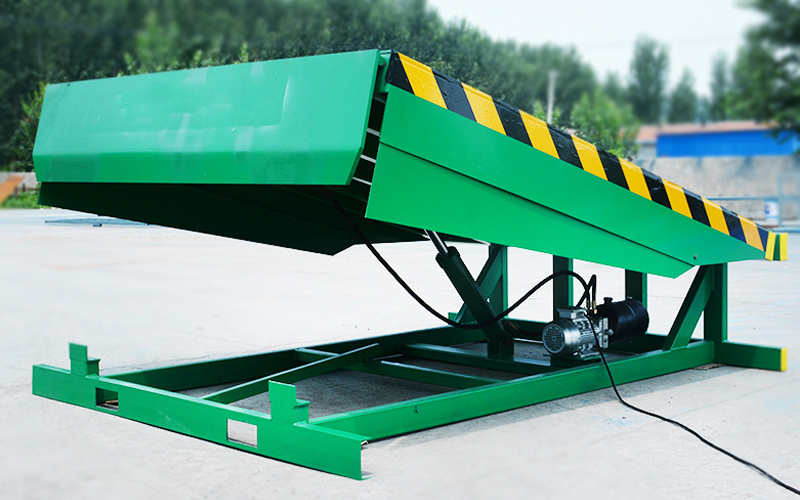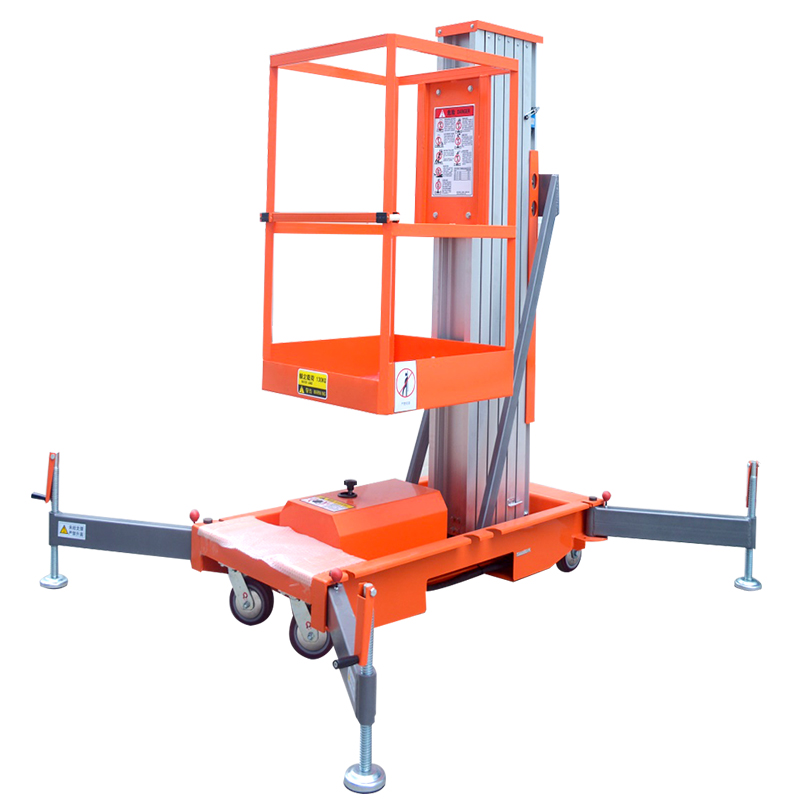Scissor lifts are versatile aerial work platforms designed to provide safe and efficient access to elevated work areas. They consist of a crisscrossing (scissor-like) metal support mechanism that extends vertically, allowing workers to perform tasks at height while standing on a stable platform. These machines are widely used in construction, maintenance, warehousing, and industrial applications due to their reliability and ease of use.
Choosing the right scissor lift size is crucial for both productivity and safety. A model that’s too large may be difficult to maneuver in tight spaces, while one that’s too small may lack the necessary height or weight capacity for the job. Compact scissor lifts are ideal for indoor use, offering excellent mobility in confined areas, whereas full-size models provide greater reach and stability for outdoor and heavy-duty applications.
The key differences between compact and full-size scissor lifts include size, weight capacity, maximum working height, and power source. Compact lifts are lightweight, narrow, and often electrically powered, making them perfect for indoor maintenance, retail spaces, and light industrial tasks. In contrast, full-size scissor lifts are heavier, with larger platforms and higher load capacities, and are commonly used in construction, large-scale installations, and outdoor projects. Understanding these distinctions helps businesses and operators select the best equipment for their specific needs, ensuring efficiency, safety, and cost-effectiveness.
Compact Scissor Lifts: Specs, Dimensions & Best Uses
Key Specifications
Compact scissor lifts are designed for efficiency in confined spaces while maintaining essential lifting capabilities. Their typical working height ranges from 10 to 30 feet, making them ideal for indoor tasks where excessive height isn’t required. The platform size varies but generally measures between 24 to 36 inches in width and 6 to 10 feet in length, providing enough space for one or two workers with tools. Weight capacity typically ranges from 500 to 1,000 lbs, suitable for personnel, light equipment, and materials.
Power options include:
Electric/Battery-Powered: Quiet, emission-free operation, perfect for indoor use.
Hybrid Models: Combine electric and fuel power for flexibility in mixed environments.
Weight & Dimensions
One of the biggest advantages of compact scissor lifts is their lightweight and maneuverable design, typically weighing between 1,500 to 4,000 lbs. Their narrow width—often under 30 inches—allows them to pass through standard doorways and operate in tight spaces like aisles, stockrooms, and retail stores. Some ultra-compact models even feature zero tail swing to avoid obstructions when turning.
Best Uses
Compact scissor lifts excel in environments where space is limited and mobility is key:
Indoor Applications
Warehouses: Stocking shelves, lighting maintenance, and equipment repairs.
Retail Stores: Signage installation, ceiling repairs, and display setups.
Facility Maintenance: HVAC servicing, electrical work, and fire system inspections.
Limited-Access Job Sites
Hospitals, schools, and office buildings where larger lifts can’t fit.
Construction sites with narrow corridors or staged work areas.
Light-Duty Tasks
Electrical & HVAC: Installing wiring, ductwork, or ceiling fixtures.
Painting & Drywall: Smooth, stable lifting for finishing work.
Event Setup: Trade shows, stage lighting, and decoration installations.
Advantages Over Full-Size Lifts
Easier Transport: Fits on smaller trailers and requires no special permits.
Lower Operating Costs: Electric models reduce fuel expenses and maintenance.
Improved Maneuverability: Ideal for congested job sites with obstacles.
Limitations
Not suitable for heavy-duty outdoor construction.
Limited reach compared to full-size models.
Lower weight capacity restricts use with bulky materials.
Compact scissor lifts are the go-to choice for indoor, light-duty, and space-constrained applications. Their lightweight design, narrow footprint, and electric power options make them indispensable in warehouses, retail, and maintenance work. However, for higher reach or rugged outdoor use, a full-size scissor lift may be necessary.
Full-Size Scissor Lifts: Power, Capacity & Industrial Applications
Key Specifications
Full-size scissor lifts are heavy-duty workhorses designed for demanding jobs that require extended reach and superior load capacity. These machines typically offer a working height range of 30 to 60+ feet, with some specialized models reaching even higher. The platform size is significantly larger than compact lifts, often measuring 4 to 6 feet wide and 8 to 14 feet long, providing ample space for multiple workers and heavy equipment. Load capacities range from 1,000 to 3,500+ lbs, making them suitable for industrial-grade materials and tools.
Power options include:
Electric: For indoor use or environments requiring zero emissions
Diesel: Delivers robust power for outdoor construction sites
Rough-Terrain: Features enhanced traction and stability for uneven ground
Weight & Dimensions
Full-size scissor lifts are substantially heavier and more robust than their compact counterparts, typically weighing between 5,000 to 12,000+ lbs. Their wider base—often 6 feet or more—provides exceptional stability, especially when extended to maximum height. Many models feature outriggers or extendable axles for additional support on challenging terrain. While their size enhances performance, it also means they require more space for operation and transport, often needing specialized trailers for relocation.
Best Uses
Full-size scissor lifts are engineered for large-scale projects where power, reach, and durability are essential:
Outdoor Construction Sites
Building Construction: Facade work, window installations, and structural repairs
Roadwork & Infrastructure: Bridge inspections, highway signage, and overpass maintenance
Industrial Plants: Refinery maintenance, pipefitting, and large equipment servicing
Heavy-Duty Industrial Tasks
Steel Erection: Handling heavy beams and structural components
Mechanical Installations: Positioning large HVAC units, generators, or machinery
Warehouse Operations: High-bay storage systems and mezzanine construction
Large-Scale Maintenance Projects
Stadiums & Arenas: Lighting rigging, scoreboard repairs, and seating maintenance
Airports & Hangars: Aircraft servicing, hangar door maintenance, and terminal upgrades
Shipyards & Ports: Container handling and vessel maintenance
Advantages Over Compact Lifts
Greater Reach: Handles high-elevation tasks that compact lifts cannot
Superior Load Capacity: Supports heavy tools, materials, and multiple workers
Enhanced Durability: Built to withstand harsh outdoor environments
Versatile Power Options: Diesel and rough-terrain models excel in demanding conditions
Limitations
Less Maneuverable: Requires ample space for operation and transport
Higher Costs: Increased fuel consumption and maintenance expenses
Specialized Training Needed: Operators must be certified for larger equipment
Full-size scissor lifts are indispensable for industrial, construction, and large-scale maintenance projects. Their extended reach, heavy load capacity, and rugged design make them ideal for outdoor and high-capacity applications where compact lifts fall short. While they require more space and investment, their productivity and versatility justify their use in professional settings.
Comparison Table: Compact vs. Full-Size
| Feature | Compact Scissor Lift | Full-Size Scissor Lift |
|---|---|---|
| Max Height | 10–30 ft | 30–60+ ft |
| Weight Capacity | 500–1,000 lbs | 1,000–3,500+ lbs |
| Weight (Machine) | 1,500–4,000 lbs | 5,000–12,000+ lbs |
| Best For | Indoor, tight spaces | Outdoor, heavy-duty |
Choosing the Right Scissor Lift: Key Factors to Consider
Selecting the appropriate scissor lift for your project requires careful evaluation of several critical factors to ensure safety, efficiency, and cost-effectiveness.
1. Workspace Size & Access
The physical constraints of your job site play a crucial role in determining whether a compact or full-size scissor lift is suitable. For indoor or confined spaces (e.g., warehouses, retail stores, or narrow construction sites), a compact lift with a narrow width (under 30 inches) and lightweight design is ideal. These models can easily navigate through standard doorways and tight aisles. In contrast, outdoor or open job sites (e.g., construction zones, industrial plants) typically require full-size lifts, which offer greater stability but need more operating space.
2. Required Lift Height & Load Capacity
Height Needs: Compact lifts generally reach 10–30 ft, while full-size models extend to 30–60+ ft. Choose based on your maximum working height requirement.
Weight Capacity: Compact lifts support 500–1,000 lbs, sufficient for workers and light tools. Full-size lifts handle 1,000–3,500+ lbs, accommodating heavy materials and multiple personnel.
3. Power Source (Electric vs. Diesel vs. Rough-Terrain)
Electric/Battery: Best for indoor use—quiet, emission-free, and low maintenance.
Diesel: Ideal for outdoor construction—powerful and long-running but noisy and emits fumes.
Rough-Terrain: Designed for uneven ground (e.g., construction sites, unpaved areas) with enhanced traction and stability.
4. Cost Considerations (Rental vs. Purchase)
Rental: Cost-effective for short-term projects or occasional use. Avoids maintenance and storage costs.
Purchase: More economical for frequent, long-term needs. Requires investment in upkeep and operator training.
Final Recommendation
Assess your project’s space limitations, height requirements, load demands, and power needs before deciding. For indoor, light-duty tasks, a compact electric scissor lift is optimal. For heavy-duty outdoor applications, a diesel or rough-terrain full-size model is preferable. Always factor in budget and usage frequency when choosing between rental and purchase.
Safety & Maintenance Tips for Scissor Lifts
General Safety Precautions
Always inspect the lift before use, checking for hydraulic leaks, tire condition, and control functionality.
Ensure the work area is clear of obstacles, debris, and overhead hazards.
Use fall protection (harnesses, guardrails) when working at height, per OSHA regulations.
Never exceed the weight capacity or height limits specified by the manufacturer.
Avoid operating in high winds (especially for outdoor lifts) or on unstable surfaces.
Importance of Regular Inspections
Conduct daily pre-use checks of brakes, controls, and emergency features.
Schedule professional inspections annually or as recommended by the manufacturer.
Document maintenance to comply with OSHA and ANSI standards and prevent equipment failure.
Training Requirements for Operators
Only certified personnel should operate scissor lifts (OSHA mandates formal training).
Training must cover load limits, stability risks, and emergency procedures.
Refresher courses are required if an operator is reassigned or incidents occur.
Pro Tip: Keep logbooks for inspections and training to ensure compliance and safety.
Conclusion: Choosing the Right Scissor Lift for Your Needs
When selecting between compact and full-size scissor lifts, consider workspace access, height requirements, load capacity, and power source. Compact models excel in tight indoor spaces (10–30 ft reach, 500–1,000 lbs capacity), while full-size lifts handle heavy-duty outdoor tasks (30–60+ ft reach, 1,000–3,500+ lbs capacity).
Final Recommendations:
For warehouses, retail, or light maintenance → Compact electric lifts
For construction, industrial sites, or rugged terrain → Full-size diesel/rough-terrain lifts
Where to Find Quality Scissor Lifts?
For reliable, high-performance lifts, explore TUHE LIFT—a leading Chinese manufacturer specializing in scissor lifts, boom lifts, and home elevators. Established in 2012 by senior engineers, TUHE LIFT operates from Jiyang (China’s "Lifting Platform Manufacturing Hub"), with 300+ employees, 3 workshops, and 20+ distributors. Their products meet world-class standards, balancing durability, safety, and affordability.
Contact TUHE LIFT today for expert guidance and customized solutions!
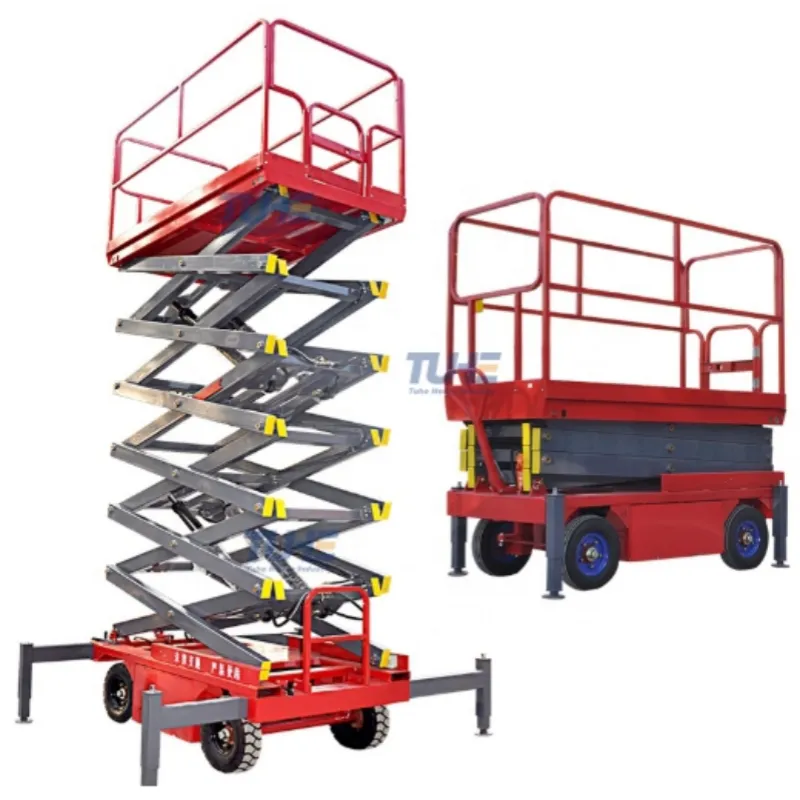
222.webp)
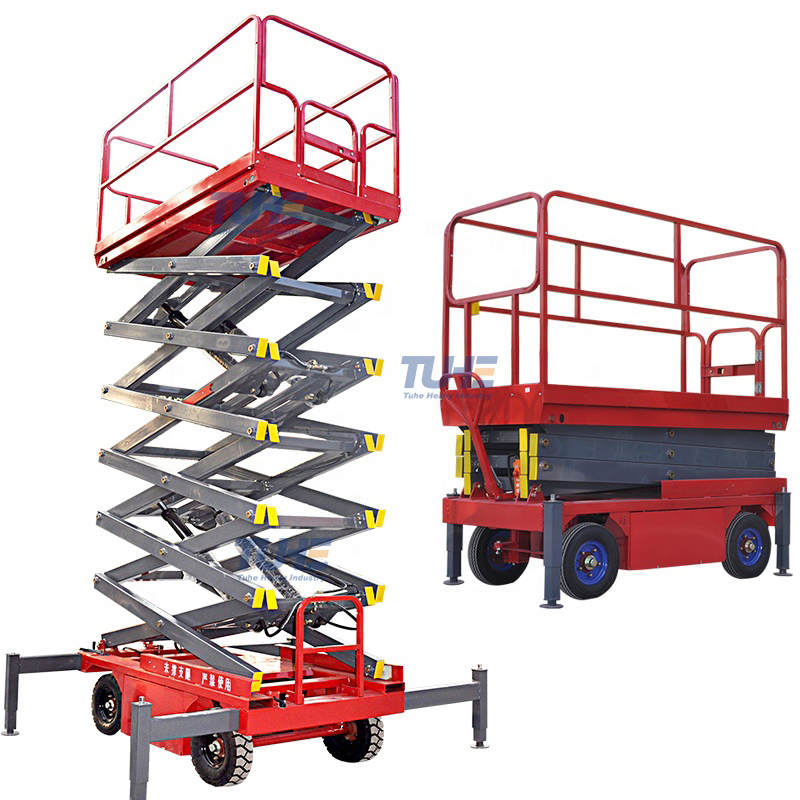
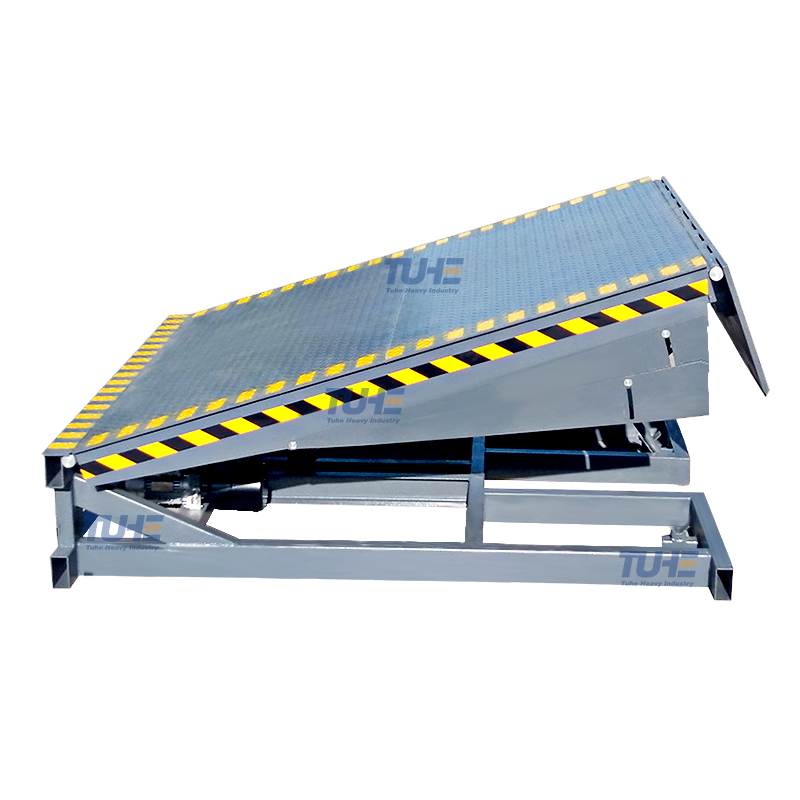
660.webp)
503.webp)
695.webp)
